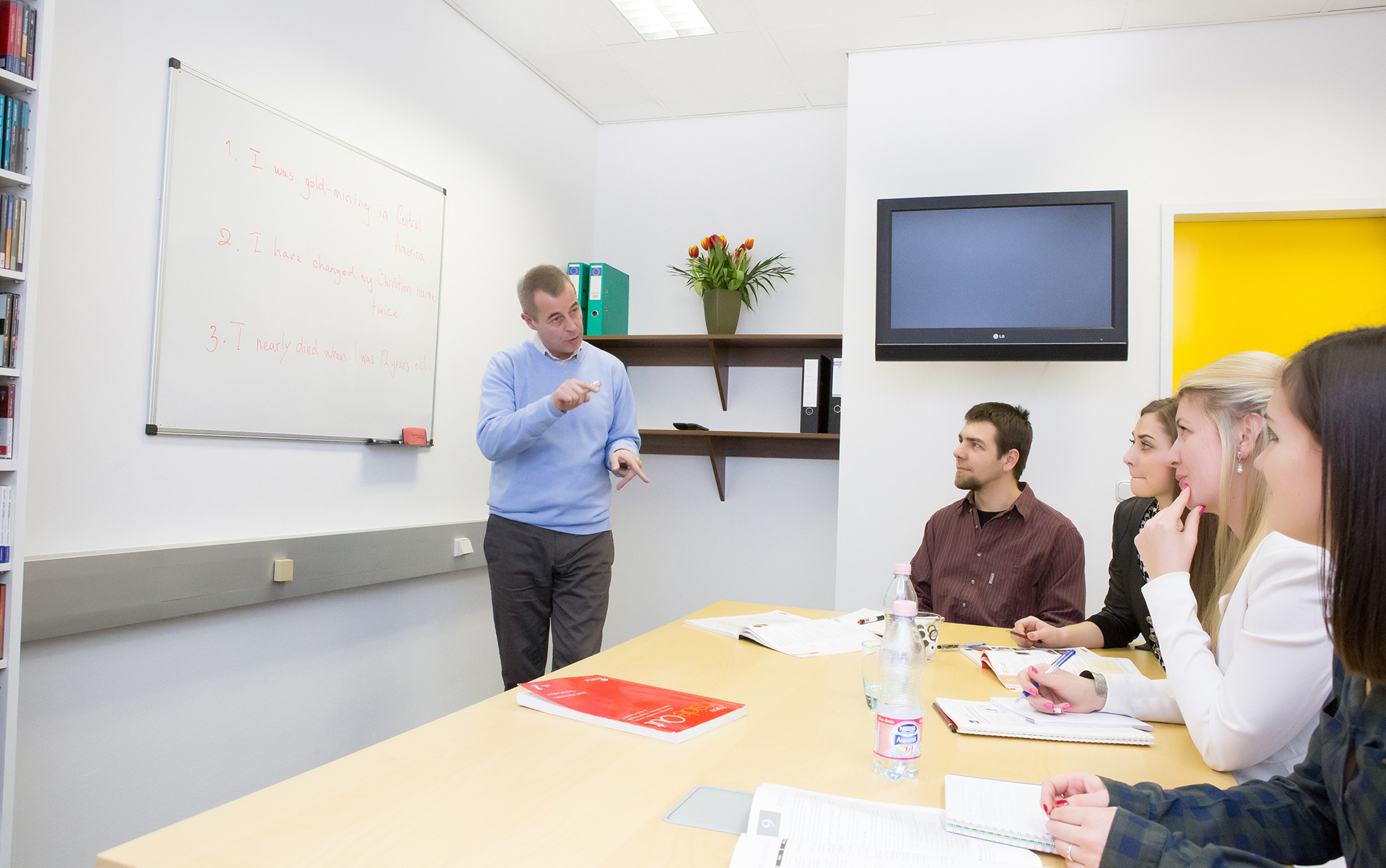
Running effective intensive language training for adults requires a strategic approach that takes into account the unique needs and learning styles of adult learners. Here we outline best practice to ensure the success of such programmes and share our experience a case study describing a project delivered to a local client.
Steps for Running Effective Intensive Language Training for Adults
- Assessment and Customisation:
- Initial Assessment: Conduct a thorough assessment of participants’ current language proficiency, learning goals, and needs.
- Customization: Tailor the curriculum to address specific linguistic skills and professional contexts relevant to the learners, for example technical language or telephone/meeting skills.
- Qualified Instructors:
- Expertise: Planning for a a pool of experienced language tutors who are skilled in adult education and familiar with the specific language being taught is key to providing the variety needed to ensure learner engagement.
- Training: Provide ongoing professional development to instructors to keep them updated with the latest teaching methods and technologies. Consider appointing a senior tutor to mentor less experienced staff.
- Engaging Curriculum:
- Interactive Lessons: Use a variety of teaching methods, including interactive lessons, real-life scenarios, role-plays, and multimedia resources.
- Balanced Skills: Focus on all language skills – speaking, listening, reading, and writing – with an emphasis on practical usage.
- Provide Variety: Ensure each participant is taught by a range of tutors with different teaching styles an important factor in maintaining learner focus.
- Immersive Environment:
- Language Immersion: Create an immersive environment where the target language is used exclusively during training sessions.
- Cultural Exposure: Include cultural components to help learners understand the context and nuances of the language and provide additional colour and interest.
- Small Group Sizes:
- Personalized Attention: Keep group sizes small to ensure personalized attention and active participation from each learner.
- Group Dynamics: Foster a collaborative and supportive learning atmosphere. Use tools such as Edmodo to build the classroom dynamic outside of classroom hours.
- Practical Applications:
- Real-World Tasks: Integrate real-world tasks and simulations that are relevant to the learners’ professional or personal needs. If the employer can provide context for these, this will provide additional motivation for learners.
- Field Trips: If possible, organize field trips or practical experiences where learners can use the language in real-life situations. Visit cafés, restaurants and museums, set your learners up with tasks to complete.
- Frequent Assessments:
- Regular Testing: Conduct regular assessments to track progress and identify areas that need additional focus.
- Feedback: Provide constructive feedback and adjust the training program based on assessment results.
- Technological Integration:
- Language Apps: Use language learning apps and online platforms to supplement classroom instruction and provide additional practice.
- Online Resources: Provide access to online resources, such as language learning websites, videos, and interactive exercises.
- Motivation and Support:
- Transparent Goals: Set realistic and achievable goals. Ensure that these are communicated with a clear structure.
- Support Systems: Offer additional support, such as tutoring sessions, discussion forums, and study groups.
- Flexible Scheduling:
- Intensive Schedule: Plan an intensive schedule with frequent, shorter sessions rather than long, infrequent sessions to maintain engagement and retention.
- Accommodate Adults’ Needs: Consider the learners’ availability and provide flexible scheduling options if possible.
Best Practice for Effective Language Training
- Communicative Approach:
- Emphasize communication and practical usage of the language rather than just grammar and vocabulary.
- Task-Based Learning:
- Use task-based learning to engage learners in meaningful tasks that require language use.
- Blended Learning:
- Combine face-to-face instruction with online learning to provide flexibility and additional resources.
- Peer Learning:
- Encourage peer learning and group activities to build confidence and improve conversational skills.
- Continuous Improvement:
- Regularly review and update the curriculum based on feedback and new language learning research.
Case Study:
Objective: Expand labour pool for a client recruiting in the Technology sector
Language Solutions partnered with a long-term client to deliver a fully-managed intensive language training programme. The client had identified that they would be able to grow the number of potential new hires with suitable technical skills in software development by lowering their entry criteria for English communication skills. Language Solutions planned, designed and implemented intensive language training programs in two patterns:
Full-time, 3-month courses prior to the start of employment
Half-time, 6-month courses integrated into working time
Key to the success of the programmes were the coordination provided by senior tutors to ensure continuity between multiple tutors and the flexibility to adapt to feedback and varied learner development speeds.

info@langsols.hu | +36 1 210 3823